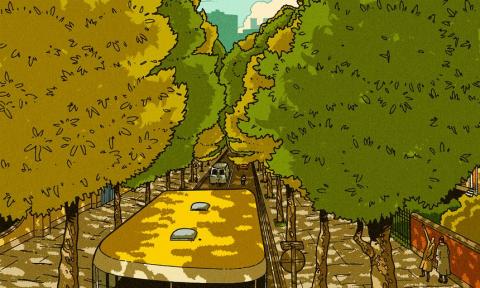
By Ian Jack
Every three years, the surgeons come to our street and operate on the plane trees. Their nonchalance is remarkable. First, they loop ropes over the highest branches that they estimate will bear their weight, then they swing upwards, bare-legged in shorts and boots, chainsaws dangling from their waistbands, casually hollering to each other as if they were Tarzans, before they press their noisy tools into life and the cutting begins. They are all young men – English, so far as I can tell – and it may be that some of them like to show off. At any rate, they’re quick and efficient. The branches come crashing to the ground, to be fed by other young men into a whirring machine that reduces them to woodchips. An older man with a broom sweeps up the twigs and the sawdust. The surgeons load their vans and move on.
The trees they leave behind give a good impression of the aftermath of Passchendaele or the Somme, their complicated foliage reduced to the skeleton of a trunk and a few leafless branches. In this way, crude but effective, the local council curbs tree growth and the possibility of litigation from householders who blame their cracked walls and ceilings on the spread of ever-thirsty roots.
Did anyone envisage this damaging possibility when the trees were planted and the houses built, in 1890? It seems unlikely. The hybridised plane trees that arrived in London from Spain and France late in the 17th century soon became such a feature of parks, squares and gardens that they were known as the London plane.
Nobody thought to plant them along pavements in the capital, however, until the Paris-inspired craze for tree-lined boulevards crossed the Channel in the mid-19th century. The Victoria Embankment, completed by Joseph Bazalgette in 1870, was lined with London planes the next year, and other new thoroughfares such as Northumberland Avenue soon followed.

